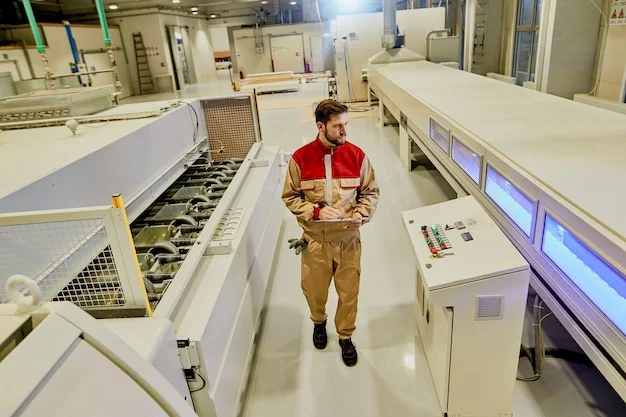Physical Address
304 North Cardinal St.
Dorchester Center, MA 02124
Physical Address
304 North Cardinal St.
Dorchester Center, MA 02124

In today’s world, advanced filtration plays a critical role in ensuring healthier environments, safer drinking water, and cleaner air. As industries and consumers alike demand higher standards for purity and safety, the evolution of filtration technologies has become indispensable. From cutting-edge materials to smart systems, advanced filtration encompasses a vast array of methods designed to efficiently remove contaminants, viruses, bacteria, and chemicals. This article delves into the fundamentals, key technologies, materials, applications, advantages, challenges, and future trends of advanced filtration, providing a comprehensive overview to inform industry professionals, researchers, and consumers alike.
At its core, advanced filtration relies on particle separation mechanisms that can include physical, chemical, or electrostatic processes. The primary goal is to eliminate unwanted particles, such as microbes, organic compounds, or inorganic pollutants, from liquids or gases. Different filtration media are utilized depending on the application, ranging from porous membranes to activated carbon and nanomaterials.
Efficiency metrics are vital for evaluating filtration performance. Pore size, typically measured in micrometers or nanometers, determines what particles can pass through. Retention rate indicates the percentage of specific contaminants filtered out. In advanced filtration, achieving high retention rates with minimal pressure drop is a key goal, ensuring cost-effective and sustainable operation.
Traditional filters, such as simple mesh or cloth filters, are limited in particle size and capacity. They often clog quickly and are ineffective against emerging contaminants like microplastics or pharmaceuticals. Technological advances—like nano-engineered materials, smart sensors, and surface modifications—have propelled advanced filtration systems beyond these constraints. Innovations such as membrane technology and nanomaterials allow for highly selective, efficient, and durable filtration solutions.
Membrane-based filtration technologies are at the forefront of advanced filtration. They use semi-permeable barriers that allow certain molecules or particles to pass while blocking others.
This technique employs materials like activated carbon, which has a high surface area for trapping organic compounds, chemicals, and pollutants through adsorption. Specialty adsorbents are tailored for specific contaminants such as pesticides, pharmaceuticals, or heavy metals.
By removing chemicals that cause odors or health issues, adsorptive filtration enhances water and air quality, making it crucial in environmental remediation and industrial emissions control.
Using static charges to attract and capture particles, these filtration systems are especially effective against fine particles such as bacteria and viruses. Electret filters are commonly found in N95 masks and high-efficiency HVAC filters, offering high filtration efficiency with low pressure drops.
They are vital in healthcare settings and for personal protective equipment (CDC), especially during pandemics, providing an additional layer of defense against airborne pathogens.
The integration of sensors and real-time monitoring allows filters to adapt dynamically to changing conditions, optimizing performance and lifespan. AI and IoT technologies enable predictive maintenance, reducing downtime and costs.
For instance, smart filtration systems can detect clogging or breakthrough of contaminants, automatically adjusting flow rates or alerting operators, thus ensuring continuous and high-quality filtration.
Emerging materials such as nanomaterials—including carbon nanotubes and graphene oxide—offer exceptional filtration capabilities due to their high surface area and tunable properties.
Sustainable and biodegradable materials are also gaining traction, reducing environmental impact and promoting eco-friendly solutions. Examples include biopolymer-based membranes derived from cellulose or chitosan.
Surface treatments, such as hydrophobic or hydrophilic coatings, enhance filtration performance by preventing fouling and facilitating easier cleaning. Antimicrobial surfaces help inhibit microbial growth on filter media, extending operational lifespans and maintaining safety standards.
Coatings can also be tailored to repel certain chemicals or enhance selectivity, aligning with specific industry needs.
Clean drinking water is increasingly vital as contaminants such as pathogens, heavy metals, persistent organic pollutants, and emerging chemicals threaten health. Advanced filtration techniques, notably membrane filtration and adsorptive methods, are employed to produce safe water and treat wastewater effectively. Desalination systems utilizing reverse osmosis are vital for regions facing water scarcity (UN Water).
Indoor air quality has become a major health concern due to pollutants, allergens, and airborne pathogens. High-efficiency particulate air (HEPA) filters and electrostatic filters are used in homes, hospitals, and industrial facilities to reduce harmful particles.
In industrial sectors, advanced air filtration manages emissions control, reducing environmental impact and complying with strict regulations, such as those from the Environmental Protection Agency (EPA).
Ensuring safety and quality in food processing relies on sterilization and the removal of particulates and microbes. Facilities use advanced filtration to achieve high standards of hygiene, prolong shelf life, and preserve flavor.
Filtration systems that are food-grade and compliant with safety standards play a fundamental role in this sector.
In pharmaceuticals, sterile filtration removes microorganisms and endotoxins from medicines and vaccines. Respirators and mask filters, like N95s, are vital for protecting healthcare workers and the public during outbreaks (WHO).
Advanced filtration ensures the safety and efficacy of medical products and equipment across healthcare settings.
| Technology | Application | Advantages | Limitations |
|---|---|---|---|
| Membrane Filtration | Water treatment, desalination | High selectivity, effective against microbes | Costly membranes, fouling issues |
| Adsorptive Filtration | Chemical removal, air purification | Removes organic pollutants, customizable | Limited lifespan, regeneration required |
| Electrostatic/Electret Filters | Masks, HVAC | High filtration efficiency, low pressure drop | Potential charge decay over time |
| Smart Filtration | All sectors | Real-time monitoring, adaptive | Higher initial investment |
As advanced filtration technology continues to evolve, its role in safeguarding health, preserving the environment, and enabling sustainable development is set to grow exponentially. Ongoing research and innovation will likely introduce even more effective, eco-friendly solutions, making clean air and water accessible to all. For more trusted insights, visit industry leaders and research organizations dedicated to advancing filtration technologies.